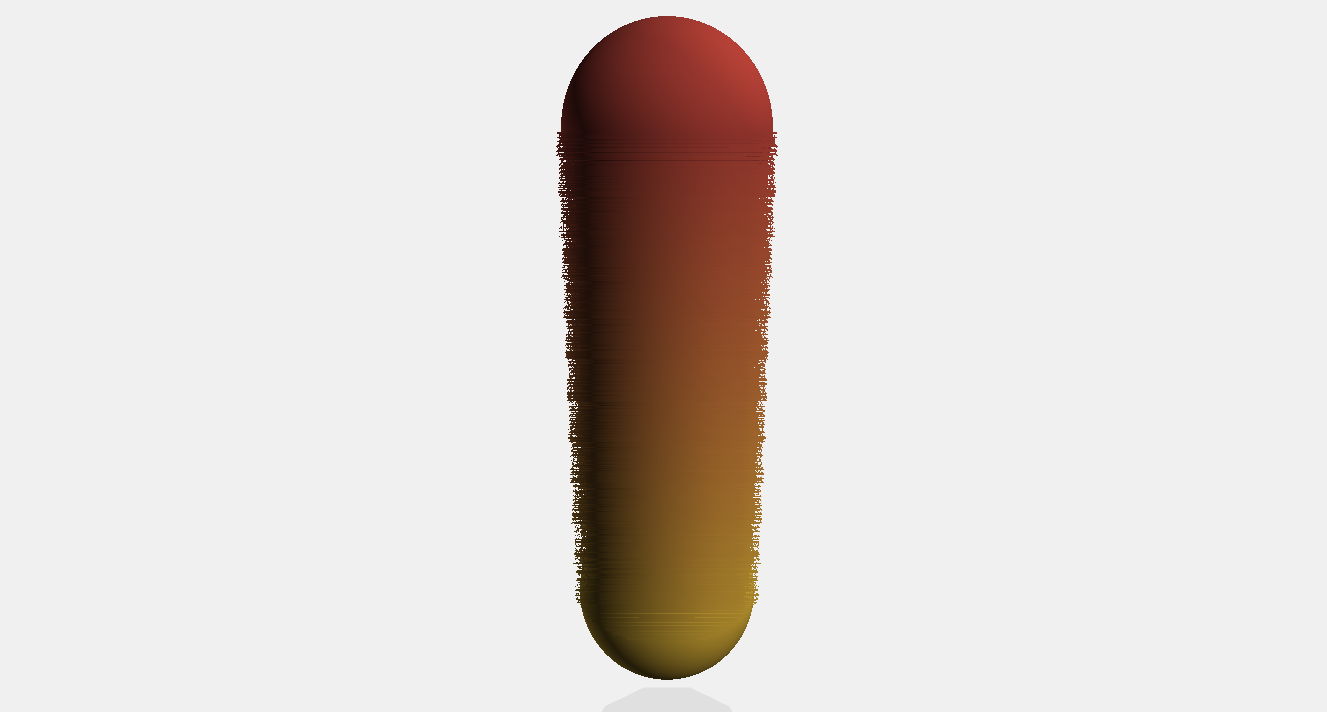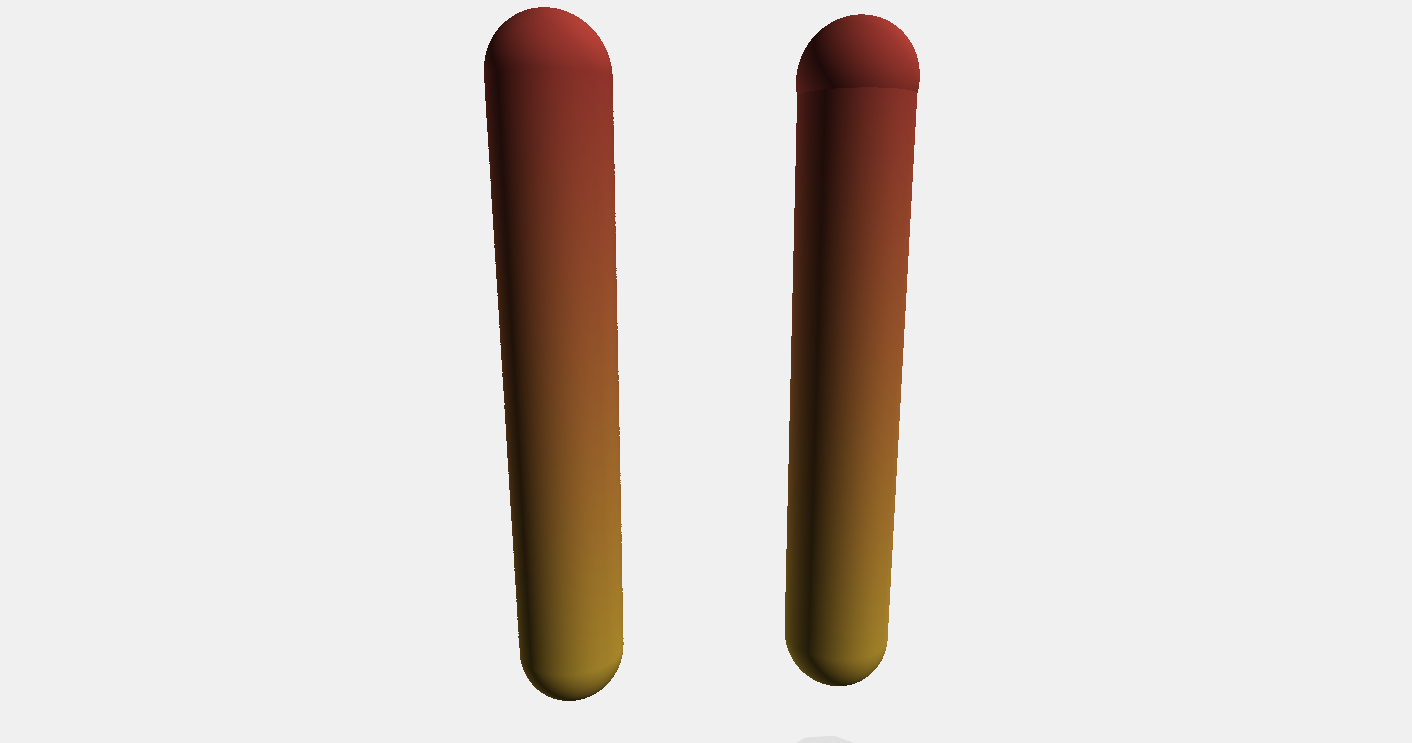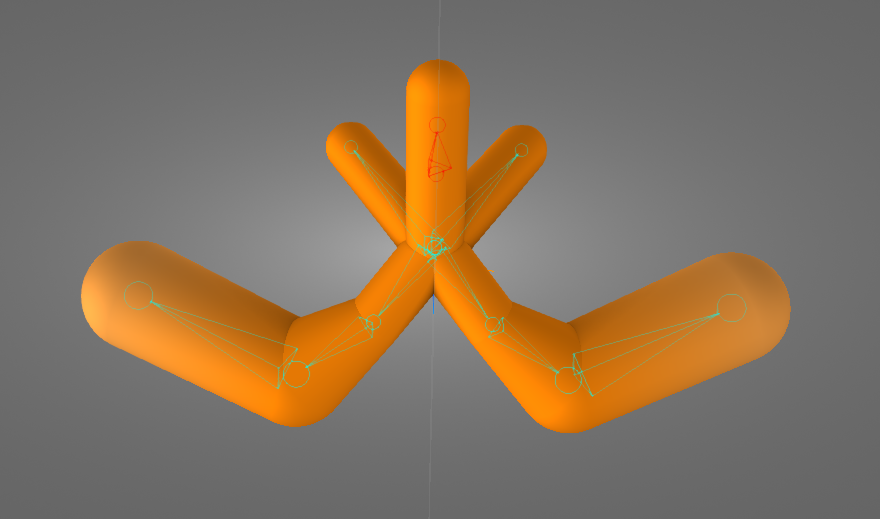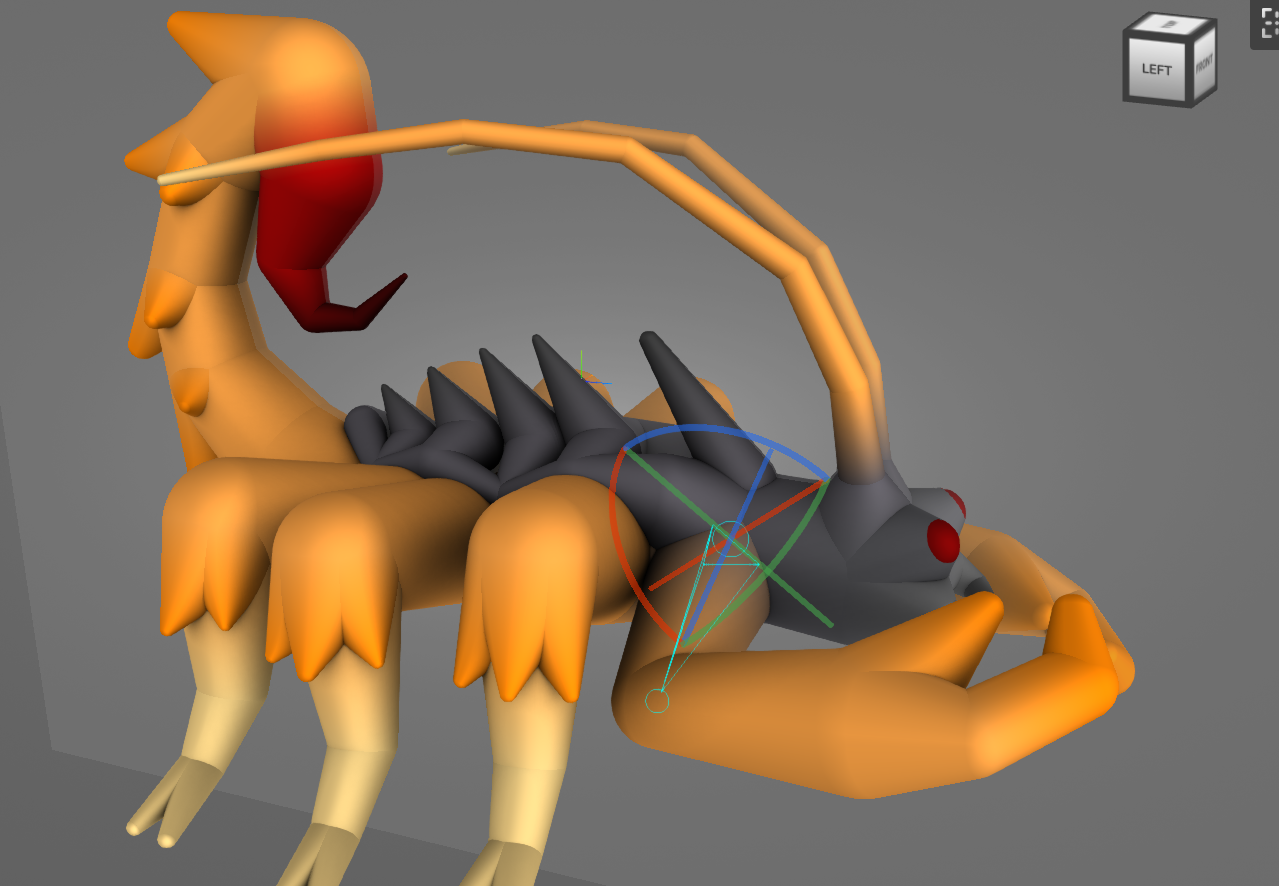CapsuleSketch
CapsuleSketch is an online 3D modeler based around modeling with capsule primitives.
I joined the project as R&D intern Software Engineer, and was tasked with improving the rendering engine and implementing new 3D features.
While I have worked on multiple elements of the modeler, I’ll only include the most relevant.
Improved cone frustum raytracing
An issue of the modeler when I joined was that, as the capsules (which are a combination of two spheres and a cone frustum) got close to having two extremities of the same radius, the cone raytracing started to experience severe graphical artifacts.

Graphical artifact example. Top radius is 4, bottom radius is 3.98
This issue was due to the way the cone is raytraced, which led to manipulating huge float numbers,
resulting in 32-bit float precision errors.
To mitigate the issue at the time, the cones were converted to cylinders if the radii ratio reached a
certain threshold. This allowed to avoid the issue, but led to another issue:

Left ratio: 3.8 / 4. Right ratio: 3.9 / 4.
To solve this issue, I had to implement an entirely new cone raytracing algorithm; one that would solve the float precision issue. The new algorithm revealed itself to be very stable in our use-case, being able to handle even the same-radius situation really well.
Demo:
Raymarching and ShaderToy export
One of the research topics for the modeler was the implementation of a raymarching render mode, using implicit surfaces. The end goal was to be able to use this implicit representation for implementing smooth edges.
Sadly though, it was discovered early on that raymarching such a complex multi-volume model was too GPU intensive, and could end up crashing the user browser on lower-end machines. As a consequence, the in-modeler feature was put on indefinite hold.
However, the feature was not entirely scrapped as it was decided that it could still be used as a
communication tool by reaching out to the ShaderToy community.
As such, the raymarching code was reused to be exportable as a ShaderToy-ready shader.
Export example (GPU intensive !):
If the demo has issues loading, use this link
Auto-skinning and posing
One of the features I worked on was setting up an automatic skinning process, which allowed the implementation of a model posing feature, and should help in setting up an animation feature in the near future.
This automatic skinning is possible thanks to the model structure. Since we’re using spheres, cone
frustums and triangles, the model can be represented as an undirected graph. This makes it easy to determine
possible bones in trivial cases:

However, once cycles start to appear, determining those bones becomes non-trivial. As a consequence, it was decided that cycle groups are non-bendable, and form a single bone.
My next task then was to create an algorithm for finding cycle groups in an undirected graph, since no suitable algorithm was found. In the end, an algorithm was found, and the feature was implemented. Technical details should be provided in a future article.

Going from there, the next step was generating the proper model skeleton and applying the skinning to
the model, then setting up the posing interface:



